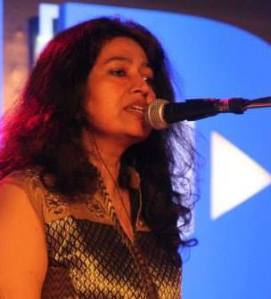It’s a sign of our times that while we are positive about
many aspects of our lives, we are negative about politics. Many of us choose to
live in an insulated world, scorning the ‘filth’ of the political machinery.

For those who do so, let me tell you that you are wrong. Let me
also tell you why you are wrong. You think your life is far removed from
politics, that you are getting on with your life quite happily (or unhappily)
and your interest in the democratic procedure consists of giving a thumbs up or
down to Arnab and Rajdeep grilling a politician. You think it’s the
government’s job to run the country while you run your life.
Do answer this question: who comprises the government? The people who contest elections and win. You have not taken part in the electoral process and yet you put your trust in them to make policies that affect your
livelihood.
You might well ask: What if I do vote and my candidate does not win? It does not matter. What matters is that you participate in the democratic process and keep it strong.
As a journalist I have covered the whole gamut of democracy
– from elections to proceedings of the
civic body and the legislature, interacted with politicians of all hues,
grilled them and at times sympathized with deserving candidates whose parties
denied them tickets. While politics in any part of the world is murky, I know
Indian politics is the murkiest.
In a curious paradox, as an individual I became distanced
from politics -since we were reporting from the ground, we were trained to be
non-partisan. Sometimes it’s easy to be swayed by the persona of the politician
and blinded by what they stand for or don’t stand for. One lives and learns.
In recent years, I have been engrossed in building up my
publishing business and content just to cast my vote. No long a card-carrying
journalist with the power and preferential treatment that is par for the
course, I experience the travails of the average educated Indian. I fight the
entrenched interests in the system as much as I can and sometimes I lose. I am
among others who want to be heard not because I know someone who knows someone
but simply because I want my basic rights.
When the Bangalore Political Action Committee (B.PAC) was announced, I
read the news with the same scepticism that many others would have. The people
behind it appeared to be a bunch of rich people posturing along with the usual
suspects that float through Page 3.
Recently, I sat in at an editors’ roundtable held by B.PAC’s Mohandas
Pai and Kiran Mazumdar Shaw. What they said made me sit up and take notice.
Bangalore contributes 60 per cent of Karnataka’s GDP without a matching pay off
in terms of investment in its development. Garbage crisis, crumbling road,
inadequate policing, power and water supply – name the woe and and we have it.
The system is skewed against Bangalore as it has just 28 out
of 224 Assembly constituencies (there’s another seat to which a eminent citizen
is nominated). This is the reason that no political party, except the hardy
candidate who has got the ticket to contest, pays much heed to the capital of
the state. Compounding the city’s weakness in the political process, is the
apathy of the voters.
While a large number of our residents are a floating
population – a strange mix of elite corporate employees and migrant rural
labour – the native Bangaloreans sit back and crib without bothering to vote.
B.PAC says that the
political balance would tilt in many constituencies even if 50% of the educated
middle class in Bangalore were to vote. Mohandas Pai, B.PAC Vice President,
reasons that we can have a new generation of leaders and make them understand
what is required for Bangalore.
You don’t have to join B.PAC if you don’t want to, though
they promise some fun and games instead of just speeches; you can ignore the
page 3 poseurs who have they mustered in a mistaken bid to be glamorous or
inclusive. But do NOT ignore the power of your vote.
My dip into politics:
My first experience with politics came, as would have for
most of us, in college. As a pre-university student (Class XI) I was one of the
small group of campaigners who addressed peers and seniors. It was great fun
and we did it more as a rehearsal for the debate team.
The candidate I supported next when I moved to another
college for my BA got more support – I joined the core group that made his
election collateral that consisted of handmade posters. He won and is still
active in politics.
From those days of innocent fun, it was a rude shock to see
the hugely politicized students elections at the post -graduate level when I
was studying political science. I was almost lured into one of the parties but academics
held greater allure.
Colleges don’t have student body elections of the kind that
were extant years ago; in a way this might have harmed the political process as youth are idealistic. The anti-corruption wave has touched our young people and
B.PAC is seeking to raise their awareness. In a non-partisan manner, I recommend Prof Rajiv Gowda’s political action internship for students.
-Sandhya Mendonca
(
ballot box illustration from kineticlive.com)
















































